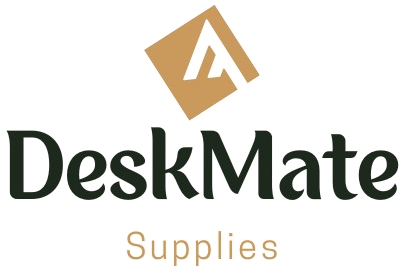
Workspace Layout Psychology | How Desk Placement Shapes Productivity
Share
🧠 Why Desk Placement Matters More Than You Think
In 2025, U.S. offices are rethinking their floor plans — not just for style, but for psychology.
Where your desk sits, what you face, and how light hits your space all subtly influence mood, attention, and motivation.
Environmental psychologists call this the “spatial effect” — how positioning in a room affects your brain’s ability to feel safe, alert, and creative.
Whether you’re designing a solo home office or managing a 50-person workspace, layout choices can make or break daily focus.
💡 Fact: According to the Environmental Design Institute (2024), workers seated near natural light or open sightlines are up to 40% more productive than those facing walls or corners.
🪞 1. The “Command Position” Principle
Borrowed from interior design and traditional feng shui, the command position is the ideal spot for both confidence and focus.
You should be able to:
-
See the entrance without being directly in line with it.
-
Have a clear view of the room (not just a wall).
-
Sit with your back to a solid surface, like a wall or screen.
This layout helps your brain stay relaxed and alert — no subconscious “threat scanning” that happens when you sit with your back to open space.
Try this: Angle your desk diagonally toward the door or a window for better visual balance.
🌤️ 2. Natural Light and Line of Sight
Light exposure plays a direct role in circadian rhythm — your body’s internal clock.
Facing a window or positioning your desk within natural daylight boosts alertness, serotonin, and creativity.
If windows aren’t an option, use daylight-simulating LED lamps with adjustable color temperatures.
Avoid harsh overhead lighting or fluorescent bulbs; they trigger eye fatigue and stress over time.
💡 Pro Tip: Even indirect natural light (reflected from walls or ceilings) can improve concentration by 25%.
🧩 3. The Flow of Movement
In offices, cluttered walkways and tight spacing cause more stress than most managers realize.
Research shows that constant interruptions — people walking behind or too close — increase anxiety and make workers self-conscious.
Solutions for smoother flow:
-
Leave 3 feet of space behind each chair.
-
Avoid placing desks directly in foot traffic zones.
-
For shared workspaces, add low partitions or plants for gentle privacy without full isolation.
🪴 4. Personal Space = Mental Space
Even small personal zones matter. In team settings, adding a little personal buffer (18–24 inches) between coworkers’ setups can dramatically reduce tension.
At home, try these layout upgrades:
-
Use an L-shaped desk to separate digital and non-digital work (e.g., laptop vs. notebook).
-
Keep open wall space for a whiteboard or mood board — it signals creativity and planning.
-
If possible, avoid having your back directly to a doorway or hallway; it drains focus subconsciously.
🧠 5. The Psychology of Direction
Believe it or not, which way your desk faces affects how you think.
-
Facing a window or open view → promotes creativity and long-term thinking.
-
Facing a wall → supports deep concentration and analytical work.
-
Facing toward people → increases collaboration but may invite distraction.
💡 The trick? Match orientation to your role.
Designers, writers, and strategists often perform best facing open space, while analysts or accountants benefit from inward-facing, minimal layouts.
🪑 6. Group Dynamics in Shared Offices
For team workspaces, layout determines culture.
Circular or U-shaped arrangements foster collaboration; rows or cubicles encourage task focus.
There’s no one-size-fits-all solution — the goal is balance.
Example layouts trending in 2025:
-
“Pod” clusters (4–6 desks) → popular for creative teams.
-
“Linear zones” → efficient for task-driven roles.
-
“Hub-and-spoke layouts” → combine a central shared table with quiet side desks.
💬 Statistic: 71% of U.S. employees say a “visually open” but “personally controlled” workspace helps them stay focused longer.
🌈 7. Refreshing the Mood With Micro Adjustments
Not every company can rebuild an office, but even micro shifts make a difference.
-
Move your desk 10° toward natural light.
-
Rotate a plant or wall art into your line of sight.
-
Add acoustic panels to absorb noise.
-
Introduce neutral or biophilic colors (sage, beige, soft blue) for calm focus.
These small interventions often provide the same mental reset as a complete redesign — at a fraction of the cost.
🧘 Final Thoughts
Your workspace isn’t just where you sit — it’s an ecosystem that shapes how your brain feels and performs.
The right desk placement can increase focus, confidence, and creativity more effectively than any new gadget.
Whether you’re an individual freelancer or a company rethinking its office plan, remember: psychology and design go hand in hand.
When space feels right, work flows naturally.
